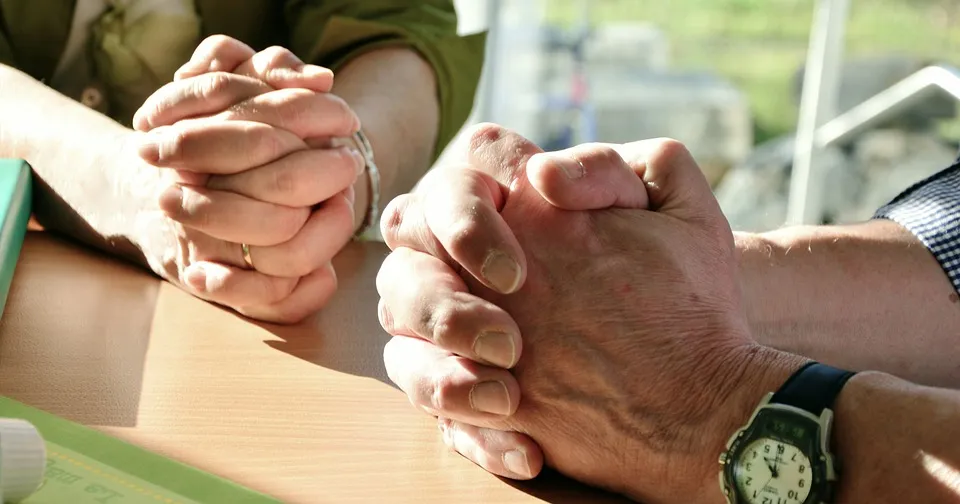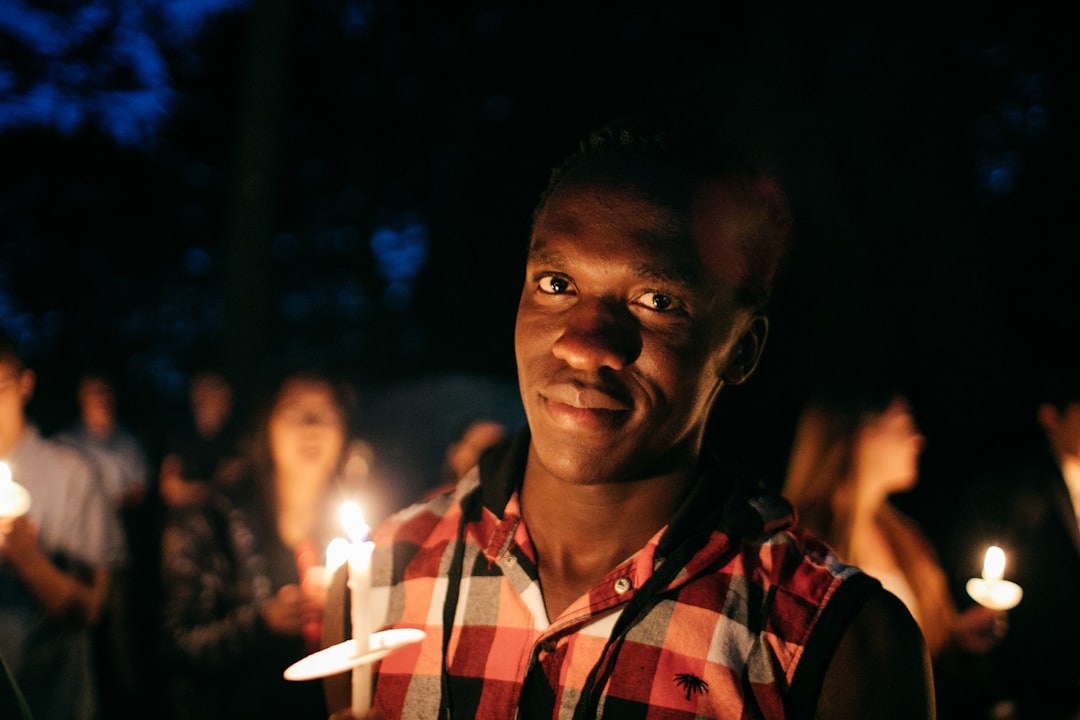Prayer vigils have long been a way for communities to come together in times of mourning, celebration, or reflection. A powerful and spiritual experience, these gatherings can provide a source of solace, comfort, and healing, fostering a sense of unity and support for all involved. This post explores the origins and significance of prayer vigils, as well as practical tips, benefits, and different types, to help you gain a deeper understanding of this sacred practice. Read on to learn more.
The Origins and History of Prayer Vigils
Prayer vigils have a long and rich history dating back to ancient times. In Christianity, the practice of prayer vigils can be traced back to the Bible, where Jesus himself prayed in the Garden of Gethsemane before his crucifixion.

Throughout history, prayer vigils have been used for a variety of reasons, including mourning, healing, and community support. In the early days of Christianity, prayer vigils were held in secret to avoid persecution. Later on, prayer vigils became more public and were organized by churches and religious organizations.
One notable example of a prayer vigil in history is the All-Night Vigil, also known as the Vigil of All Saints, which is a tradition in both the Eastern Orthodox and Roman Catholic churches. This vigil is typically held on the eve of a major feast day and involves a series of prayers, hymns, and readings that reflect on the significance of the event being celebrated.

Over time, the practice of prayer vigils has evolved to meet the needs of different communities and situations. Today, prayer vigils can be found in a variety of faith-based and secular settings, including hospitals, schools, and community centers.
Despite their long history, prayer vigils remain a powerful and meaningful way for people to come together in times of need. Whether it’s to mourn the loss of a loved one or to offer support and comfort to those who are struggling, prayer vigils offer a way for people to connect with one another in a deep and meaningful way.
If you’re new to prayer vigils or simply curious about their history, it’s worth taking the time to learn more about this important and time-honored tradition. By understanding the origins and history of prayer vigils, you can better appreciate their meaning and significance in modern times.
Here are some key takeaways about the Origins and History of Prayer Vigils:
- Prayer vigils have a long and rich history dating back to ancient times
- The practice of prayer vigils in Christianity can be traced back to the Bible
- Prayer vigils were originally held in secret to avoid persecution
- The All-Night Vigil is a notable example of a prayer vigil in history
- Prayer vigils have evolved over time to meet the needs of different communities and situations.
The Meaning and Significance of a Prayer Vigil
A prayer vigil is a sacred gathering in which people come together to pray, meditate, reflect, and offer support to one another. It is an act of faith, a demonstration of solidarity, and a way to connect with the divine and the community. Prayer vigils have a long history in many spiritual and religious traditions, including Christianity, Judaism, Islam, and Buddhism.
At its core, a prayer vigil is a way to show love, compassion, and empathy for those who are suffering or in need. It is a way to ask for healing, peace, and comfort, not only for oneself but also for others. It is a way to seek guidance, strength, and wisdom from a higher power, and to offer thanks and praise for the blessings of life.
The significance of a prayer vigil lies in its ability to create a sense of community and support. It is a moment of unity in which people put aside their differences and come together for a common cause. It is a way to show that no one is alone in their grief, their struggles, or their joys. It is a way to share in each other’s journey and to offer help and hope along the way.
A prayer vigil is also a way to honor the traditions and rituals of one’s faith. It is a solemn and meaningful ceremony that can be customized to fit the specific needs and beliefs of each community. It can be a time of quiet reflection, singing, chanting, reading scripture, or simply sitting in silence. Whatever the form, a prayer vigil is a chance to deepen one’s connection to the divine and to express one’s devotion and gratitude.
Ultimately, the meaning and significance of a prayer vigil are what the participants make of it. It can be a time of mourning and healing, a time of celebration and joy, or a time of intercession and petition. What matters most is the intention behind it and the spirit in which it is conducted. A prayer vigil is a powerful reminder of the strength and beauty of community, and a testament to the faith and hope that bind us all together.
Preparing for a Prayer Vigil: Practical Tips and Ideas

When preparing for a prayer vigil, it’s important to create an environment that is conducive to reflection, meditation, and contemplation. Here are some practical tips and ideas to help you prepare for a successful vigil:
Select a Suitable Venue – Choose a quiet and peaceful location for the vigil. It could be in a church, a community hall, or any other location that provides a serene atmosphere for prayer and contemplation.
Decide on the Theme – The theme of the vigil should reflect the purpose of the gathering. Whether it’s for healing, mourning, or celebration, the theme sets the tone for the event.
Invite Participants – Spread the word about the vigil in your community, inviting people to participate. It’s essential to bring together a diverse group of individuals who share a common goal.
Plan the Service – The service should include prayer, scripture readings, and music. Arrange for people to lead different parts of the service, and make sure the program flows smoothly.
Provide All Necessary Items – Ensure that the venue has sufficient seating, candles, and prayer books if necessary. Providing refreshments may also be a kind gesture, especially if the vigil is expected to last for an extended period.
Create an Appropriate Ambience – Use dim lighting to create a solemn atmosphere. You may also decorate the venue with flowers, banners, and other ornaments that complement the theme of the vigil.
Have a Contingency Plan – Be prepared for any possible challenges that may arise, such as power outages or inclement weather. Consider having a backup plan in case you need to relocate the vigil.
A prayer vigil can serve as a powerful tool for comfort, healing, and community. With the right preparation and execution, it can help bring people together in solidarity, empathy, and hope. By implementing these practical tips and ideas, you can ensure that your prayer vigil is a meaningful and memorable experience for all who attend.
The Benefits of Participating in a Prayer Vigil: Community, Support, and Healing
Participating in a prayer vigil can provide a sense of community, support, and healing during difficult times. Prayer vigils are a sacred gathering where individuals come together to pray, reflect, and meditate. Here are some benefits of participating in a prayer vigil:
Community: A prayer vigil is a time where individuals can come together and support one another. It provides a sense of belonging, knowing that there are others who are going through similar struggles. Community is an essential aspect of Christianity, and prayer vigils can facilitate this sense of togetherness.
Support: During difficult times, it can be challenging to find support. However, participating in a prayer vigil provides an opportunity for individuals to share their stories and receive support from others in attendance. The power of prayer and the sense of unity can provide comfort and healing.
Healing: Prayer vigils can help individuals find a sense of healing and peace. Through prayer and meditation, individuals can reflect on their struggles, seek guidance, and find hope. Prayer vigils have a way of bringing people together and lifting them up during times of difficulty.
The sense of community, support, and healing that comes from participating in a prayer vigil can be transformative. It provides a space for individuals to come together in solidarity, share their stories, and find hope in the face of adversity.
Different Types of Prayer Vigils: Commemoration, Intercession, and Celebration
As you consider organizing or participating in a prayer vigil, it’s essential to understand the different types of vigils available. Each prayer vigil is unique and has its purpose, but they all promote community, support, and healing. Below are the three main types of prayer vigils:
Commemoration Vigils: Commemoration vigils are held to remember or honor a specific person, group of people, or tragic event that occurred. These vigils are traditionally solemn gatherings that provide an opportunity for people to come together to mourn, reflect, and offer support to those affected by the tragedy. Commemoration vigils are a way to remember the past, celebrate the lives lost, and offer hope for a brighter future.
Intercession Vigils: Intercession vigils are prayer gatherings that are held to intercede on behalf of people in need. These vigils offer a chance for community members to come together and pray for someone who is battling an illness, for peace in a community or country, or for people experiencing financial hardship or loss. Through the power of collective prayer, these vigils offer comfort, support, and hope to the people in need.
Celebration Vigils: Celebration vigils are held to commemorate significant milestones in a person’s life or the life of a community. These vigils are joyful gatherings that provide an opportunity for people to celebrate and give thanks for blessings received. Celebration vigils can be held to celebrate a new birth, a wedding, graduation, or a successful completion of a significant project.
Overall, prayer vigils provide a chance for individuals within a community to come together and support each other through shared moments of contemplation, reflection, and worship. Whether you’re hosting a commemoration vigil to remember a previous tragedy, an intercession vigil to offer support to those in need, or a celebration vigil to celebrate and give thanks, the power of prayer and community coming together is undeniable.
The Steps to Organizing a Prayer Vigil: Planning, Promotion, and Execution
Organizing a prayer vigil can seem like a daunting task, but with a little planning, promotion, and execution, it can be a powerful and meaningful experience for all involved.
Firstly, it’s important to have a clear intention and purpose for the prayer vigil. Are you organizing it to honor a loved one who has passed away, to pray for healing and comfort in a time of crisis, or to celebrate a milestone or achievement? Once you have a clear intention, it’s time to start planning.
The first step in planning a prayer vigil is to find a location. Consider the number of participants and the type of vigil you’re planning. Will it be an intimate gathering at a church or family home, or a larger community event held in a public space like a park or town square? Choose a location that is appropriate and accessible for your needs.

Next, consider the program for the vigil. Will there be readings, songs, or prayers? Who will lead the vigil, and who will participate? Consider inviting members of the community to share their reflections and prayers, as this can create a sense of unity and shared experience.
Another important aspect of planning a prayer vigil is promotion. Spread the word about your vigil to your community through flyers, social media, and word of mouth. Encourage participants to invite others who may be in need of comfort or healing.
On the day of the vigil, it’s important to create a peaceful and supportive environment. Consider lighting candles, setting up chairs or blankets for participants, and offering refreshments or snacks. Create a designated space for reflection and contemplation, and encourage participants to share their thoughts and feelings.
During the vigil itself, lead the group in prayers, songs, or readings that reflect the intention of the vigil. Allow space for quiet reflection and encourage participants to support one another in a spirit of compassion and empathy.
Finally, once the vigil is over, take time to reflect on its meaning and impact. Consider following up with participants by offering additional support or resources for healing and growth.

Organizing a prayer vigil may seem like a small gesture, but it can have a powerful impact on those who participate. By planning, promoting, and executing the vigil with intention and care, you’ll create a space for healing, comfort, and community.














